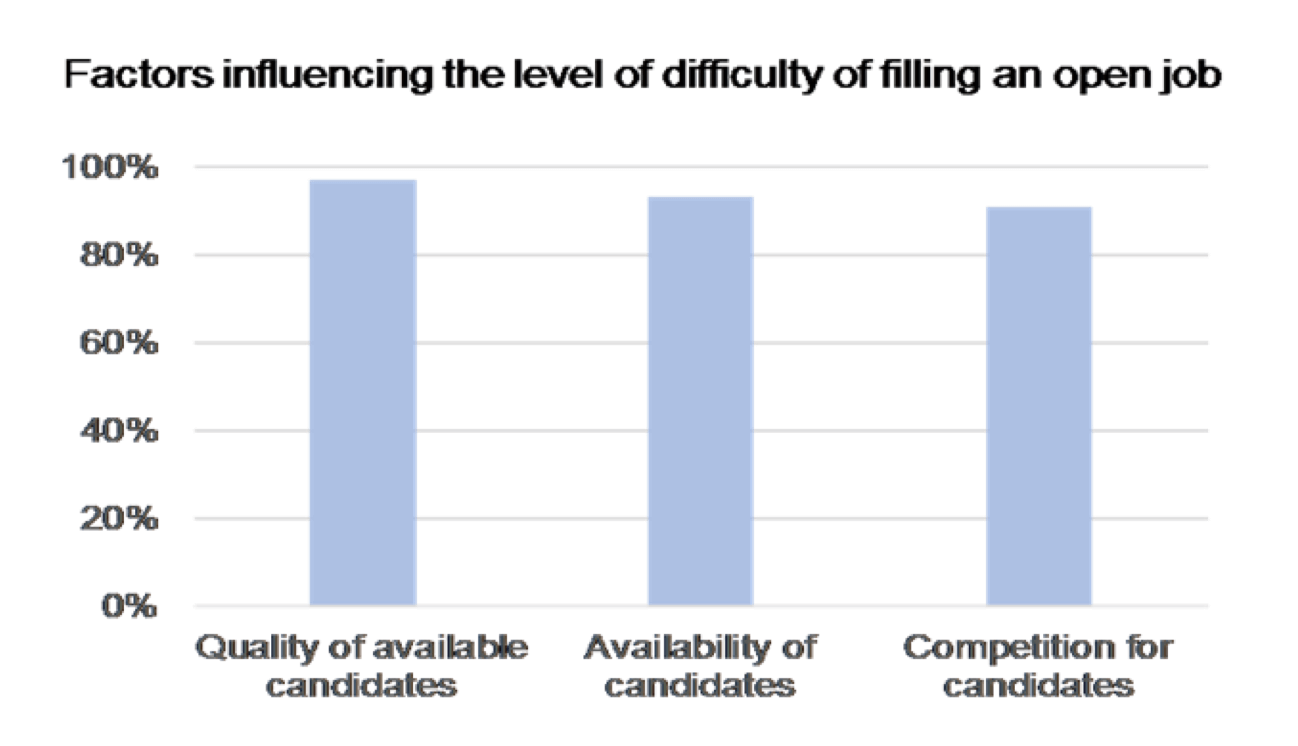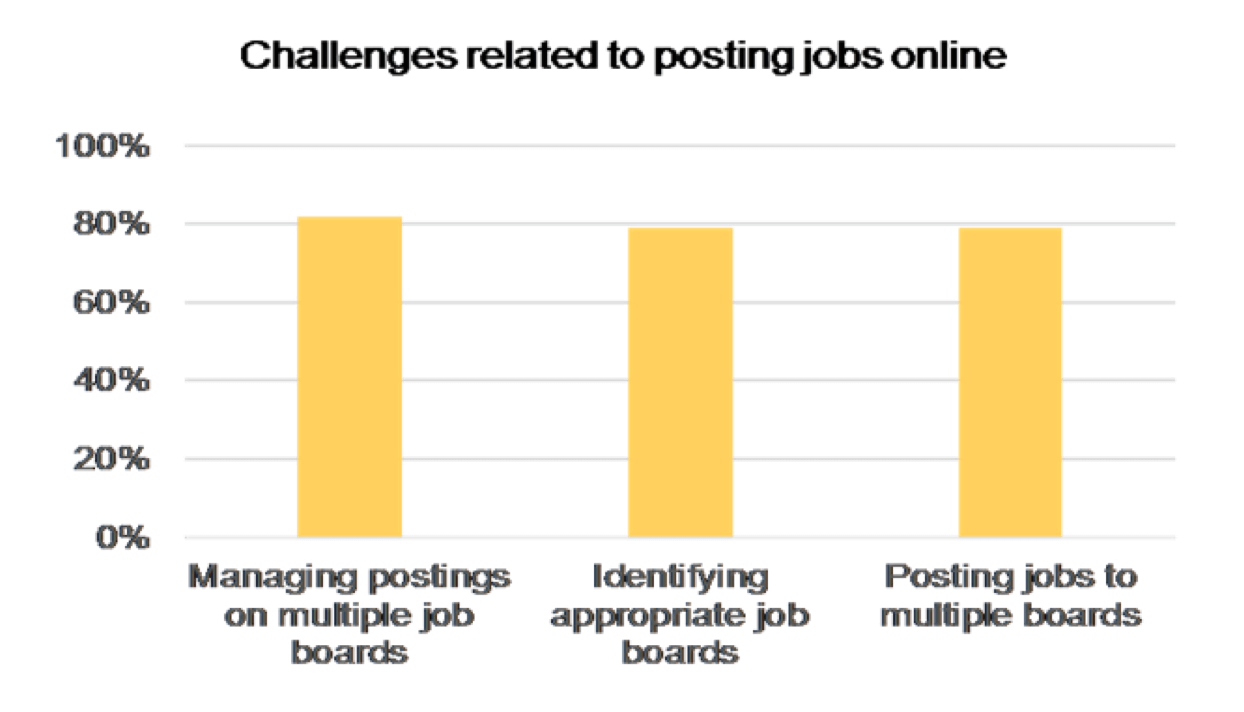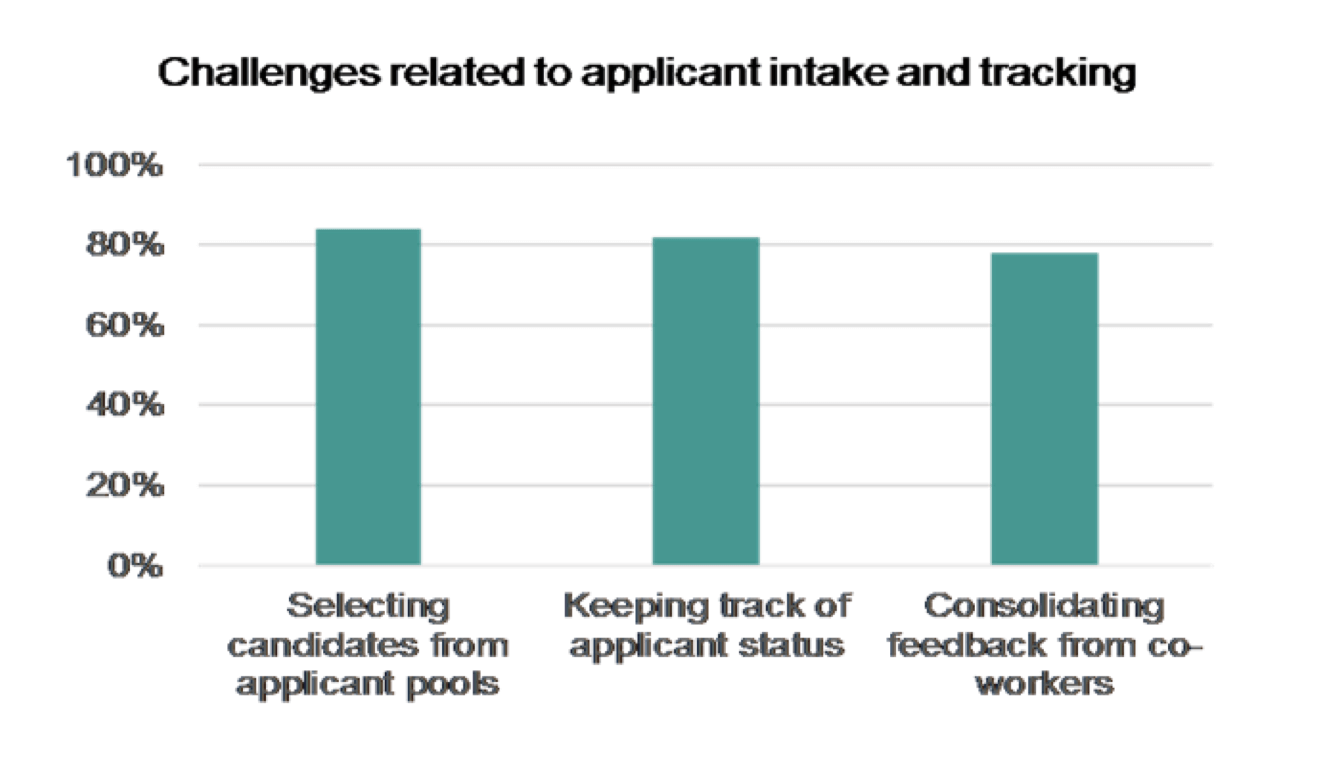Recruiting is High Stakes
Individuals charged with hiring employees face big challenges today: time pressure from hiring managers who need positions filled quickly, shrinking and highly competitive labor pools, interview processes that require collaboration among numerous people, lack of tools to facilitate the process. But it’s also a time of great opportunity: many companies are hiring due to growth or expansion and evolving job requirements, and companies know employees are their most important asset and that cultural fit is critical.
To meet the demands in today’s business environment, recruitment efforts need to be nimble, synchronized, and expansive. But a new independent study conducted by WideOpen set to release this month reveals there are key obstacles and common challenges among recruiters and hiring managers that threaten the ability to meet these demands. This global study of 2,341 recruiters and hiring managers in the US, UK, and France representing companies with fewer than 500 employees indicates the following for US respondents (n=841):
Obstacle 1: Candidate’s Market
The primary factor influencing the level of difficulty of filling an open job is related to supply and demand. There simply is a shortage of qualified, available candidates.

Obstacle 2: Managing Job Postings
To reach as many candidates as possible, recruiters typically post their job postings to multiple online job boards. With the ongoing proliferation and fragmentation of job boards and communities, this has become a burdensome, time-consuming task.
 Obstacle 3: Candidate Management
Obstacle 3: Candidate Management
Once candidates have been identified, the work of scheduling interviews, tracking applicants, and managing the interview process creates a different layer of obstacles among recruiters and hiring managers.

A Better Way
Given the understandable and relatable challenges faced by those tasked with hiring new employees, recruiters and hiring managers have specific thoughts on how to facilitate a better set of tools and processes for a smoother process.
* Easier way to manage job posts. 94% of recruiters want greater access to more candidates. Expanding access to candidates means expanding access to various candidate pools, necessitating more job boards, more postings to manage. Already 58% of respondents currently post to four or more online job boards. It’s no surprise, then, that 87% of respondents want it to be easier to manage this flurry of activity.
* Better way to track applicants. With increasing candidates coming into the funnel, recruiters need a better way to manage that volume. Among other requirements, they need to be able to quickly filter those candidates they are interested in pursuing, whether that’s a phone interview or an in-person interview. 84% indicate selecting and categorizing suitable candidates is a challenge; 86% would like better applicant tracking software.
* Better tools to facilitate overall management. While there are myriad quality online job boards, recruiters still use a lot of manual tools to manage and track the overall process: spreadsheets, word processors, printouts, emails are all used by the majority of respondents to track and manage online job posting activity, and to collaborate with colleagues and aggregate their feedback on applicants. 84% of respondents indicate the need for more automation and less paper in the process.
As the stakes for effective recruiting increase and the activities required to manage recruitment efforts multiply, companies need to enable these efforts with automation and modern digital tools. In the age of customer experience where every business is a people business, a company’s most critical asset requires a commensurate degree of attention and support.
Stay tuned for more detailed findings, including those from the UK and France.
This post was written by Jeff Rosenberg, Co-Founder and Partner at WideOpen, and was originally published on WorkConnect by SAP.
Post Views: 1,465